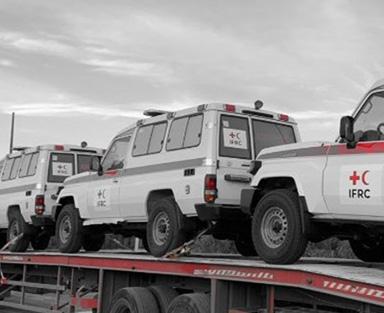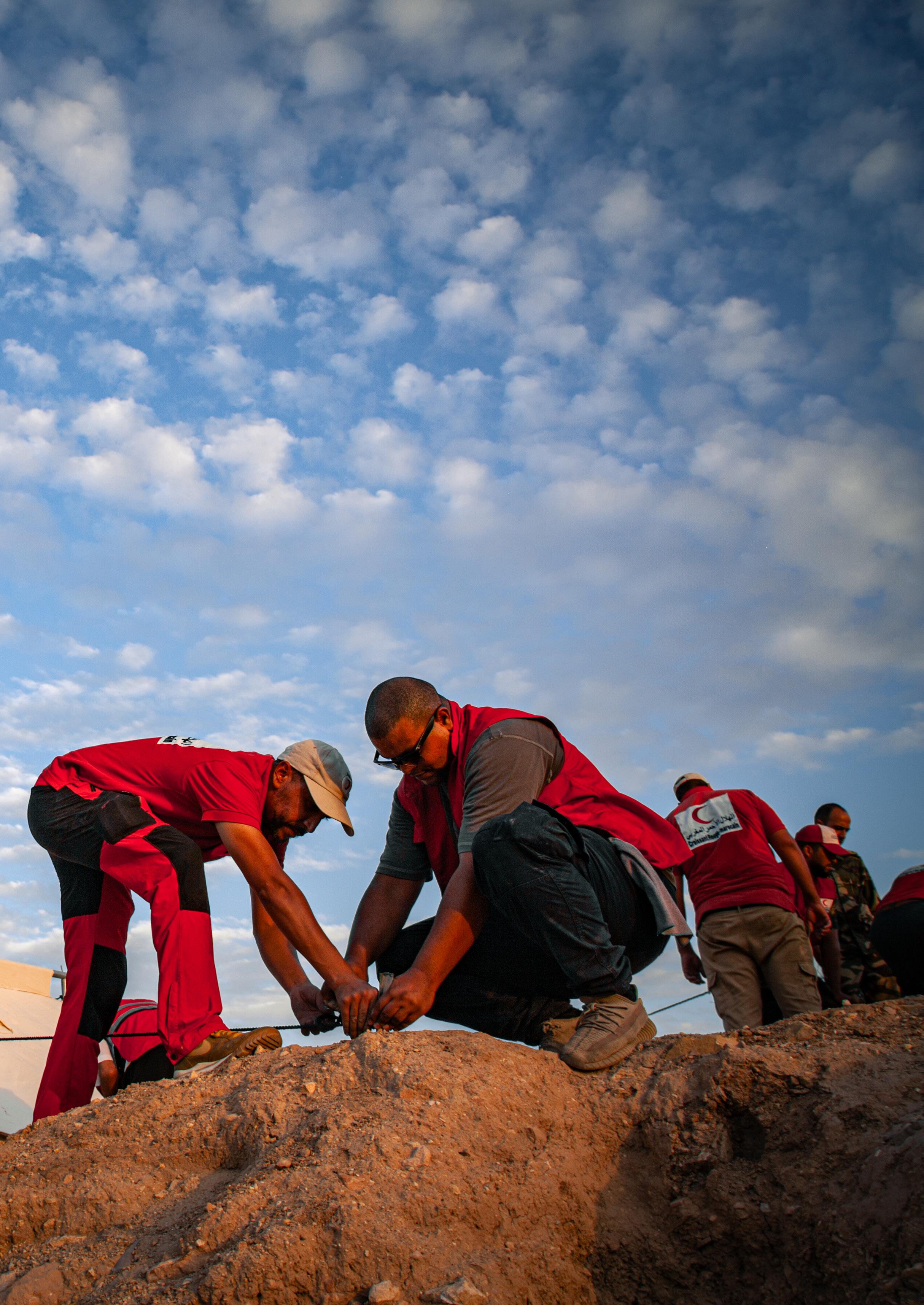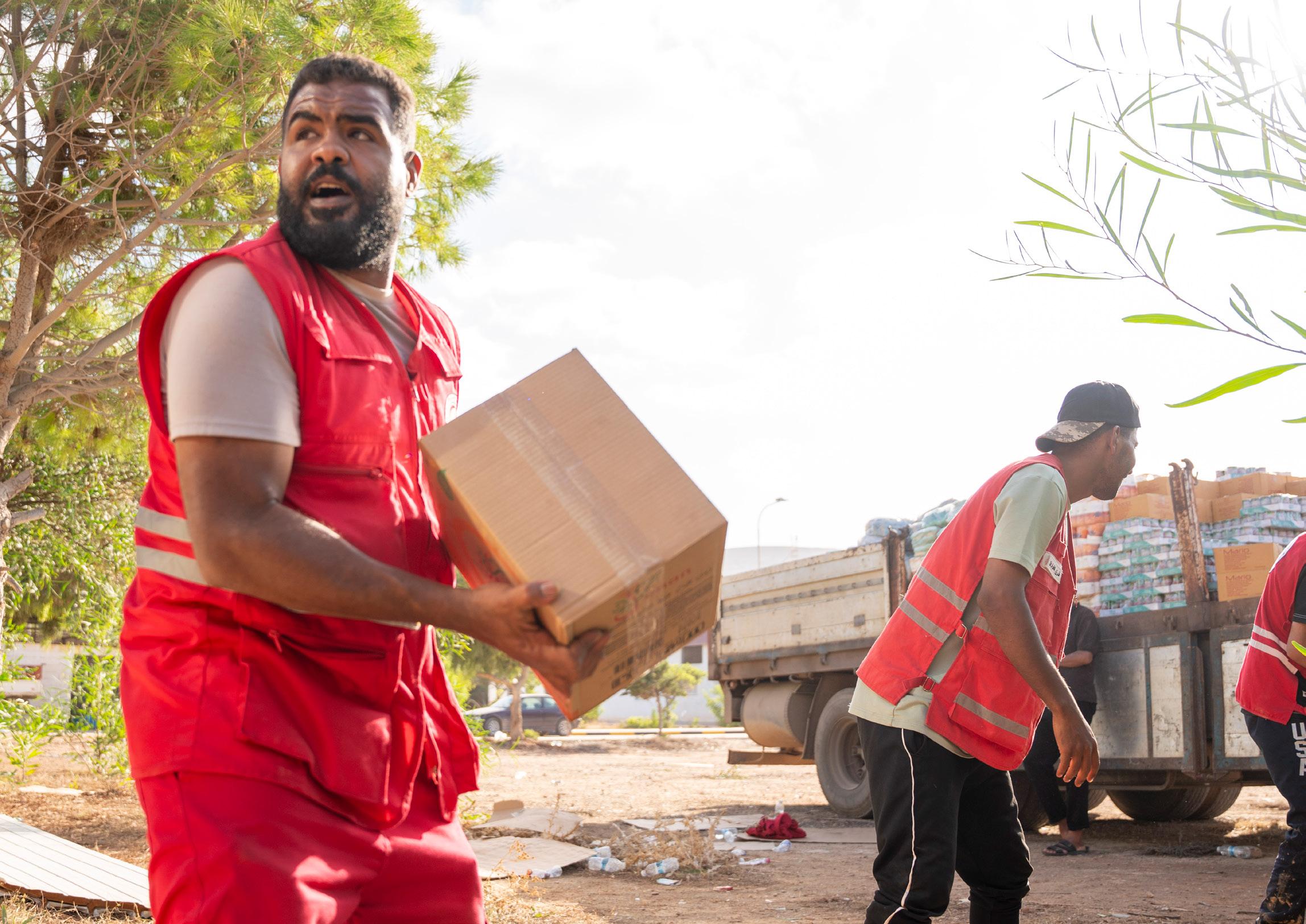






Cornelis Dees’s insights on Humanitarian Supply Chain Leadership
In the complex world of humanitarian aid, effective supply chain management is crucial to ensuring that life-saving resources reach those who need them most. Cornelis Dees, Regional Head of Supply Chain at the IFRC, shares his career journey, challenges, and leadership philosophy in this exclusive interview. From his early fascination with logistics to his role in managing global supply chains during emergencies, he offers invaluable insights for aspiring leaders in this impactful field. As supply chain demands evolve, Cornelis also highlights the importance of flexibility, adaptability, and hands-on experience in advancing a career within the humanitarian sector.





Can you share your professional journey and what led you to your current role as Regional Head of Supply Chain at the IFRC? What experiences have most influenced your approach to humanitarian logistics and supply chain management?
My background is in industrial engineering and management, and the supply chain aspect has always drawn my interest. Even as a child, I was fascinated by the movement of goods, trucks, warehouses, etc. We lived next to a busy sea shipping route, and my father, friends and I often watched cargo ships and trains. I think this early exposure sparked my interest. After working for a large 3PL and several medical manufacturers in supply chain management, I felt the urge to move into the humanitarian field. When I started in this sector, working in the world’s largest refugee camp, I discovered that the supply chain was the backbone of humanitarian assistance. This realisation really motivated me to advance my career in humanitarian logistics and supply chain. The main motivator has always been, and continues to be, making a real difference for people with limited resources. This ongoing challenge and ambition still drives my work today.

How does the IFRC’s supply chain strategy support its mission to provide timely and effective humanitarian assistance? What are the key components that ensure responsiveness during emergencies?
Although the IFRC and its network of 191 National Red Cross and Red Crescent Societies must respond to unexpected emergencies, our supply chain strategy is focused on planning and preparedness. Studies have shown that every 1 USD invested in supply chain preparedness can save up to 7 USD during the response. This preparedness varies widely depending on the country, context, and response scenarios. It can include establishing long-term agreements with suppliers for our mostused commodities, training staff on emergency supply chain procedures, supporting National Red Cross and Red Crescent Societies in implementing supply chain SOPs, and setting up contracts or pro bono agreements with freight forwarders, among other actions.
For emergency responses, we heavily rely on planning, ensuring that supply chain management is an integrated part of the response design. Given the often volatile nature of the situation, we operate a supply chain that is adaptable but efficient. We achieve this by establishing country-specific supply chain plans and structures, which, if necessary, are supported by our global supply chain network.

Sustainability is increasingly important in supply chain operations. How is the IFRC integrating environmental and social sustainability into its logistics and procurement processes?
Sustainability is an integral part of the IFRC’s supply chain, guided by the organisation’s environmental policy, climate and environment charter, and donor requirements. For example, sustainability is one of the key criteria for supplier selection in our procurement process. Additionally, we are increasingly establishing long-term agreements for core commodities based on the sustainability of the products, raw materials, transport methods, etc. We also adapt our sourcing strategies to suit specific countries or regions, ensuring a sustainable supply chain. Furthermore, IFRC’s transport and fleet management focus strongly on reducing emissions.
What strategies do you employ to build strong, transparent relationships with suppliers, and how do you ensure they consistently meet the standards required for humanitarian aid delivery?
The IFRC focus is on strategic sourcing based on country-specific and regional response scenarios and emergency plans. Through this approach, we establish long-term relationships and agreements with suppliers, which are closely monitored using our supplier performance management tools. Additionally, we have a team of technical experts to ensure the quality of products, and when necessary, we engage with third-party inspection companies for quality control.
The key to the IFRC supply chain is meeting the requirements of the end user. To achieve this, our teams engage continuously with end users and programme colleagues during the planning process. We also close the loop with a feedback mechanism to ensure continuous improvement. Furthermore, IFRC works with suppliers who have dedicated production facilities and extensive experience working with humanitarian actors, which helps improve the overall satisfaction of end users’ needs.

How is the IFRC leveraging digital technologies to enhance its supply chain operations, and what recent advancements have had the most significant impact on efficiency and transparency?
The IFRC currently focuses its digitisation efforts on enhancing the visibility of the supply chain to drive decision-making and improve efficiencies. One of the main initiatives is the establishment of a supply chain control tower, where colleagues around the world can access critical data related to the supply chain of the IFRC and its network. This ensures that the supply chain is considered a critical part of response planning, enabling us to implement the best supply chain approach.
Through our newly implemented ERP system, live data is available on key aspects, such as stock levels, long-term contracts with suppliers, lead times, etc. Furthermore, the IFRC has a strong focus on delivering supply chain tools and guidelines to its network of 191 National Red Cross and Red Crescent Societies. A newly developed website ensures easy access for any partner around the globe seeking supply chain guidance or tools. Additionally, IFRC supply chain, with the use of AI when needed, focuses on supply chain performance management by, for example, establishing KPI dashboards.


Our innovative kits improve the dignity of vulnerable people affected by natural disasters, armed conflicts or forced migration.
They all have in common that they have lost everything and are only waiting for the arrival and support of Humanitarian Organisations.
That's where our work begins, because our kits become “Boxes of Humanity”.
Headquarters
Spanish Kits Company S.L.U.
Camino de Mejorada 1B/Avenida del Sol. 28850 Torrejón de Ardoz – Madrid – Spain. T: + 34 916 568 955
We bring dignity and hope to those who need it most. www.spanishkits.es

Spanish Kits Humanitarian Aid and Relief FZ LLC
Dubai Humanitarian, Building 1, Office 222, Dubai, United Arab Emirates. T: + 971 588 808 953

Given the unpredictable nature of humanitarian crises, how does your team approach inventory management and demand forecasting to ensure the availability of essential supplies while optimising costs?
The main criteria for inventory and demand forecasting in the IFRC supply chain are scenario and response planning, combined with supply chain data. In addition, supply chain risks and potential country access constraints play a significant role. Based on multi-year organizational strategies and yearly programme plans, the IFRC supply chain determines its course of action. Demand plans are then translated into procurement plans and executed by our procurement teams.
Inventory levels in our warehouses largely depend on emergency response plans, where needs cannot be fulfilled in a timely manner by our suppliers. These inventory levels are constantly monitored and adjusted in line with our global stock strategy. This strategy is implemented together with Red Cross and Red Crescent partners, who can choose to hold stocks in IFRC warehouses and vice versa. Additionally, we work with several suppliers who hold stocks in our warehouses for immediate purchase and dispatch.
With the complexities of global supply chains, how does the IFRC manage risks to ensure continuity and resilience in its supply chain operations, especially during large-scale emergencies?
Given that our humanitarian work often takes place in challenging and risky environments, risk management is almost part of our DNA. The IFRC supply chain’s risk management focuses on preparedness and contingency planning. As we work in diverse contexts and countries, we adapt local and regional strategies accordingly.
To prevent disruption of supply chains, especially during the initial phase of our response, we invest in local preparedness and capacity enhancement in countries at risk of supply chain disruptions. For example, this includes local prepositioning of stocks and establishing agreements with local suppliers. We also invest in training and preparedness for our staff and partners, enabling, for example, the temporary deployment of supply chain staff from neighbouring countries.
Another risk is the global trend of reducing budgets and funds. To address this, the IFRC supply chain focuses on doing more with less by improving efficiencies. This includes strategic sourcing for specific countries, the use of pro bono services, pooled procurement with other agencies, and more.

What are some of the unique challenges you face in procurement for humanitarian operations, and how does the IFRC address these to maintain a competitive edge and fulfill its mission?
The main challenges in humanitarian procurement are meeting needs in terms of quality and timeliness, while ensuring value for money. Through our preparedness work and collaboration with programme colleagues, we can achieve this most of the time. However, unexpected and immediate needs always arise, especially during emergencies. To efficiently fulfill these needs, we have emergency procurement procedures that can fast-track the procurement process while ensuring we obtain the best products or services at the right price.
Furthermore, standardisation of item specifications is critical, and this is also part of our preparedness work. Still, at times, we rely on the dedication and experience of our teams to identify the right supplier who can fulfill specific emergency requests.

What trends do you see shaping the future of humanitarian supply chain management, and how is the IFRC preparing to adapt to these changes to continue delivering effective aid?
It is critical for the humanitarian supply chain to keep evolving to remain future-proof and enable humanitarian organisations to fulfill their objectives. While humanitarian needs either remain the same or are increasing, available funds are decreasing. Supply chain management is one of the key components in the humanitarian sector that ensures organisations can continue their work. The main ways the IFRC is addressing this, and our current focus, are greater preparedness, better planning, and increased collaboration both within the sector and with commercial supply chain partners.
In addition, access issues continue to pose a significant challenge in certain parts of the world, while rising transport costs present a growing risk. This drives us to implement more locally led supply chains. The IFRC and its network are uniquely positioned to lead in this area, as the 191 National Red Cross and Red Crescent Societies operate locally and have the necessary capacity including market knowledge and local partnerships to establish these local supply chains, supported when necessary, by the IFRC’s global supply chain network.
As a leader in humanitarian supply chain management, what advice would you give to those looking to begin or advance their careers in this field, particularly within organisations like the IFRC?
I would encourage anyone with an interest in the supply chain to consider the humanitarian sector. It is a highly rewarding and challenging field to work in. It is crucial to be flexible and adaptable, taking on opportunities as they arise, even if they don’t seem like a straightforward next step in your career. I also advise gaining experience in different organisations and companies to broaden your perspective, as this will always pay off in the long run.
It’s also important to enjoy the journey and not hesitate to “get your hands dirty.” For me, the best moments are still the last-mile delivery projects. While they were hard work, they continue to motivate me today.

The International Federation of Red Cross and Red Crescent Societies (IFRC) is the world’s largest humanitarian network, uniting 191 National Societies and mobilising over 16 million volunteers to provide disaster relief, health services, and community resilience initiatives globally—all grounded in principles of neutrality, impartiality, and dignity.
